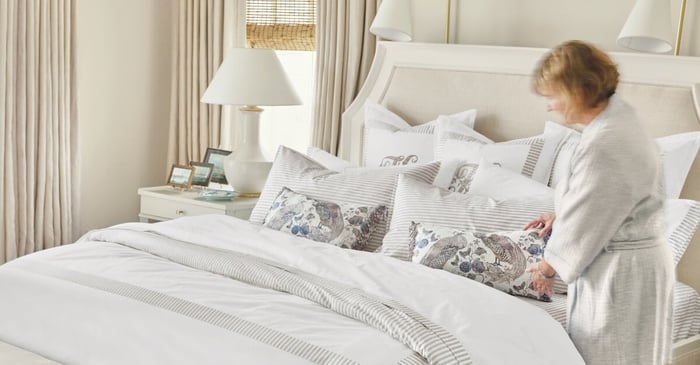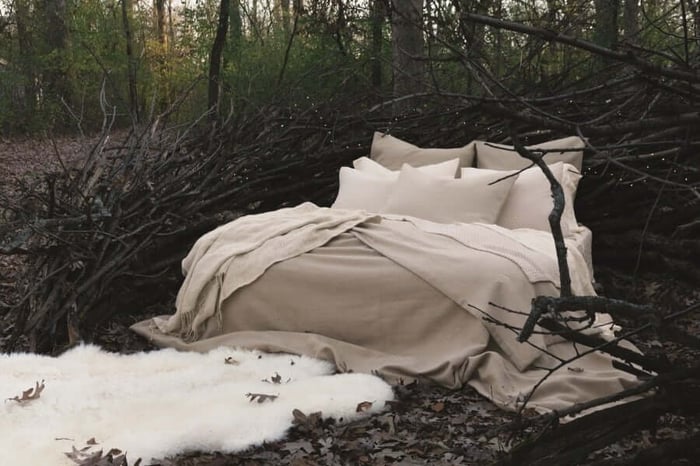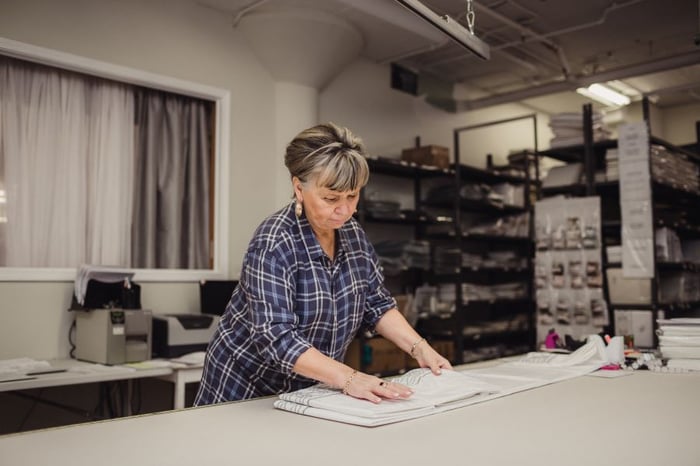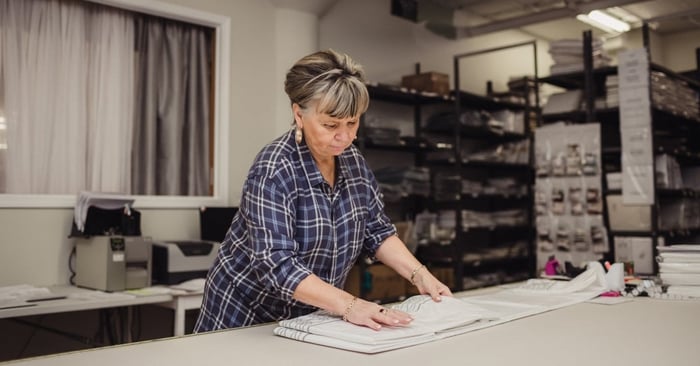Table of Contents
Fine linens have a special place in our heart. These are some of our most luxurious fabrics, sourced from premier Italian and Portuguese textile mills, and crafted from the finest cotton. As sheet sets, pillowcases, and comforters, they are the products we come into the most contact with — so we take their quality very seriously. Proper cleaning and care is vital for keeping these everyday luxuries in their best condition. The good news is that fine linens care is simple and manageable; in this article, we will break down how to clean sheeting and linens in a few easy steps.
What are Fine Linens?
Fine linens is an umbrella term describing a type of fabric crafted from the highest quality natural fibers. This includes popular 100% cotton constructions like percale, sateen, and Jacquard, as well as premium flax linen and silk. These fabrics are ideal for use in sheeting, which has to be durable and soft to the touch. See our recent blog post about the difference between percale and sateen to learn more about the two most popular sheeting fabrics.
As with all fabrics made from natural fibers, our sheeting has a tendency to shrink slightly. Our products are made a little large to account for initial shrinkage, and we advise customers to wash their items before first use for best fit.
Choosing a Detergent
Always use mild color- and fragrance-free detergent or soap to clean sheeting and avoid detergents with lighteners or bleach. Detergent should not be poured directly onto your textiles. If using a top-loading machine, add detergent to the water in the drum before loading. Alternatively, dilute the detergent first.
Washing your Fine Linens
All Eastern Accents sheets and fine linens are machine-washable. In fact, we do not recommend professional cleaning for sheeting, as many dry-cleaning chemicals can be too harsh and break down these fabrics’ natural fibers over time.
Instead, we recommend using a front-loading washing machine or a top-loading machine without an agitator. Wash on a gentle cycle. Always separate your linens and do not wash with towels or clothing.
Remove linens from the machine immediately at the end of the cycle. Leaving fabrics in the machine for an extended period can lead to stubborn, difficult-to-remove wrinkling.
Softening your Fabrics
Fabric softening products do not actually soften your fabrics; they simply add a coating which builds up and damages them over time. As an alternative to fabric softeners, add one cup of vinegar to the rinse water. This removes detergent residue and reinvigorates the fabric.
Removing Stains
If you notice stubborn stains on your linens, use an enzyme-reactive stain remover only. Do not use chlorine bleach or detergents with lighteners, as they can weaken the fabric’s fibers over time and leave a yellow discoloration.
Drying your Fine Linens
Sheets can be tumble dried on low on a timed cycle until linens are almost dry. The last few minutes of a dryer cycle are too warm for fine linens. Overheating will cause fibers to become brittle and lifeless over time. Remove linens while they are still slightly damp.
If you are able to, we also recommend air-drying sheeting on a clothesline, railing, or rod.
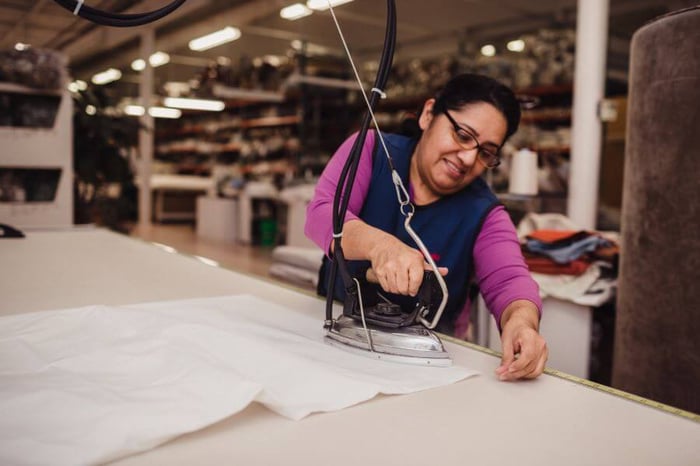
Ironing and Dewrinkling
While linens are still damp, iron them and use a spray bottle to spritz. This is gentler than an iron’s steam feature. Linens can also be placed on the bed and gently spritzed and flattened out by hand to remove wrinkles.
And now you are ready for a restful night’s sleep. Visit our Youtube channel for a video guide on how to clean sheeting and linens, or visit our Product Care page online for more details.
FAQs
What are fine linens?
"Fine linens" is an umbrella term describing a type of fabric crafted from the highest quality natural fibers. This includes popular 100% cotton constructions like percale, sateen, and Jacquard, as well as premium flax linen and silk. These fabrics are ideal for use in sheeting, which has to be durable and soft to the touch.
What kind of detergent should I use to wash sheets?
When laundering sheeting, always use mild color- and fragrance-free detergent or soap to clean sheeting and avoid detergents with lighteners or bleach. Detergent should not be poured directly onto your textiles. If using a toploading machine, add detergent to the water in the drum before loading. Alternatively, dilute the detergent first.
How do you wash sheets?
Professional cleaning is not recommended for sheeting, as many dry-cleaning chemicals can be too harsh and break down these fabrics’ natural fibers over time.
Instead, use a front-loading washing machine or a toploading machine without an agitator. Wash on a gentle cycle. Always separate your linens and do not wash with towels or clothing.
Remove linens from the machine immediately at the end of the cycle. Leaving fabrics in the machine for an extended period can lead to stubborn, difficult-to-remove wrinkling.
Should I use fabric softener on sheets?
How do you remove stains from sheets?
If you notice stubborn stains on your linens, use an enzyme-reactive stain remover only. Do not use chlorine bleach or detergents with lighteners, as they can weaken the fabric’s fibers over time and leave a yellow discoloration.
What's the best way to dry sheets?
Sheets can be tumble dried on low on a timed cycle until linens are almost dry. The last few minutes of a dryer cycle are too warm for fine linens. Overheating will cause fibers to become brittle and lifeless over time. Remove linens while they are still slightly damp. If you are able to, we also recommend air-drying sheeting on a clothesline, railing, or rod.
How do you iron and dewrinkle sheets?
While linens are still damp, iron them and use a spray bottle to spritz. This is gentler than an iron’s steam feature. Linens can also be placed on the bed and gently spritzed and flattened out by hand to remove wrinkles.
